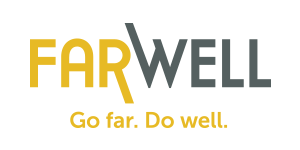Discover advisor articles and other FarWell resources.
Go far. Do well. Call (800) 987-2015
Project Portfolio Management: Ensuring Portfolio Value during the Covid-19 Outbreak

Managing Ambiguity Amidst A Global Pandemic
April 1, 2020
Business Process Tasklist for Teams Experiencing Downtime
April 27, 2020Outside forces have dramatically changed the landscape of our world; don’t wait until the next regularly scheduled portfolio review to take stock and course correct. If managers involved with Project Portfolio Management (PPM) take the time now to reassess the project portfolio, their efforts will pay off both immediately and in the long run.
How to Quickly Reevaluate a Project Portfolio: A Guide for PPM Leaders During a Time of Crisis
This approach will work for organizations with PPM methodologies at any level of maturity. During this exercise, PPM leaders will reevaluate the portfolio’s goals, needs, resources and risks. The result is a refined understanding of the value of projects in the portfolio. PPM leaders can then leverage this new insight to ensure the business value of the portfolio and alleviate uncertainty felt by stakeholders and project teams.
This guided process to reevaluate a project portfolio has three key steps:
- Analyze
- Decide
- Communicate

Analyze: PPM Leader Gathers and Applies New Information to the Portfolio
First, gather all new and updated inputs to the portfolio decision making process.
Understand Revised Business Strategies and Goals
Ideally, leadership has revised the business strategy and goals. If not, request that they do so. At the very least, ask for some directional guidance. Does the organization need to focus on reducing operating costs? Has a new product delivery method become a top priority?
Ask for New Project Requests from Business Leaders
While it may feel counterintuitive to ask for new project requests at a time like this, it makes sense that new business needs may arise. Don’t wait on this one; ask the business leaders and give them time to think it through.
Perform an Analysis of Project Resources and Constraints
Understand what is happening with your project resources and constraints: time, people, money and scope. Perform an initial, enterprise level analysis and then have your project managers perform an analysis at the project level.
Perform a Comprehensive Risk Analysis at the Project Level
This is where you’ll get the most bang for your buck. Identify new risks and push your team to develop realistic mitigation plans. It is not enough to just acknowledge the risk; plan for each new risk’s eventuality.

Decide: PPM Team Leverages Analysis to Make Decisions
Next, gather the PPM decision makers for a working session. Review the portfolio with the lens of the analyses you’ve just performed. If you have one, an updated scoring model that reflects the new reality can help facilitate this session.
Assign Each Project a New Status
Assign each existing project an appropriate designation: Continue As Is, Continue with Changes, Pause, or Cancel. Approve or decline any new project requests.
Define the Impacts to the Organization and to Each Project
This is the heart of PPM. A solid impact analysis will provide the detailed content for communications and action plans.
Example Questions for PPMs to Facilitate Decision Impact Discovery:
- What do the new statuses really mean?
- Do project resources need to be redeployed?
- Does a new project need to be initiated?
- Do business leaders need to adjust processes or develop interim solutions?

Communicate: PPM Leader Communicates Decisions and Impacts
Communication will depend on the structure of your organization and the kinds of projects in your portfolio, as well as the decisions you’ve just made.
Communicate the Decisions to All Stakeholders
Maintain trust with your stakeholders by giving context to the decisions and resetting expectations. For example, if the implementation of a new tool for a business unit is now paused, explain the reason for the pause. Let them know when they can expect work might resume and support them in understanding the full impact of the decision to people, processes and tools.
Communicate Direction to Project Teams
Project teams are eager for direction right now and transparency is critical. They want to be working on the right stuff at the right time. Even if their work is unchanged, knowing that it aligns with the current reality will go a long way to easing minds during this stressful time. And if their work is changed, they’ll need to understand the context of the change and be provided with new direction.
Document Decisions and Action Plans
The documentation of decisions and action plans is more critical now than ever. Document as if someone unfamiliar with your efforts may have to step in without much guidance.
The Goal of Portfolio Reassessment: Align the Project Portfolio with Changed Business Needs
Ultimately, the goal of this exercise is to align the project portfolio with changed business needs.
This reassessment does not have to be an exhaustive process, and does not necessarily result in wide reaching project changes. However, it is critical to ensure that the projects within the portfolio are providing the right value at the right time.
Experiencing uncertainty or challenges prioritizing your portfolio? Reach out, and we’ll get on a call to talk it through.
If you’re struggling to consolidate and reassess your project portfolio in crisis, send a note below to Mel Gillen, FarWell Customer Experience Officer. She can set up a meeting with a PPM advisor. Together you can talk through friction points you’re experiencing so we can provide a roadmap to ease uncertainty and ensure the business value of your organization’s portfolio.




